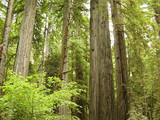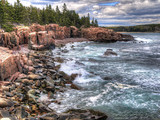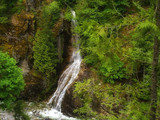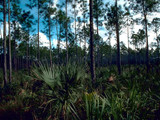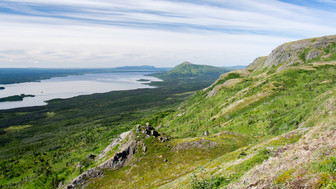Government Grants
Business Grants
Home Owner Programs
Federal Programs
About Us
Ethnohistory and Ethnoarchaeology of Reindeer Herding on the Alaska Peninsula. (Year 3 - Final)
This announcement is to provide public notice of the National Park Service (NPS), intention to fund the following project with University of Alaska Fairbanks under a Cooperative Ecosystem Studies Unit (CESU) program.
CESUs are partnerships that provide research, technical assistance, and education.
The
project intended award is $182,20 0. This is a continuation of an existing agreement, Ethnohistory and Ethnoarchaeology of Reindeer Herding on the Alaska Peninsula.CESUs are partnerships that provide research, technical assistance, and education.
The
(Year 3 - Final) ending September 30 31, 201 4. STATUTORY AUTHORITY:
Agreements Concerning Cooperative Research and Training on NPS Resources (16 U.S.C.
§ 1a-2(j)):
The Secretary may enter into agreements with public or private educational institutions, States and their political subdivisions, for the purpose of developing adequate, coordinated, cooperative research and training programs concerning the resources of the National Park System, and pursuant to such agreements, to accept from and make available to the cooperator such technical and support staff, financial assistance for mutually agreed upon research projects, supplies and equipment, facilities, and administrative services relating to cooperative research units as the Secretary deems appropriate.
STATEMENT OF JOINT OBJECTIVES/PROJECT MANAGEMENT PLAN:
This project will document a) the historic migration of Inupiat people to the central Alaska Peninsula (circa 1910), and b) the ethnohistory and ethnoarchaeology of reindeer herding in the Northern Alaska Peninsula (1910s-1940s).
A main objective is to shed light on a relatively unknown facet of the ¿American period¿ of Southwest Alaska by exploring the connections between Inupiat migratory waves and reindeer economics in this region.
Various sets of data will help understand the correlation between human population movements and modes of herding mobility across the Alaska Peninsula with emphasis on Aniakchak National Monument & Preserve (ANIA) and Katmai National Park & Preserve (KATM).
Description and Scope of project This CESU agreement between NPS and the Department of Anthropology at UAF will consist of a 36-month research project (2011-2014), which includes multi-year ethnographic and ethnoarchaeological fieldwork and extensive archival research.
The CESU agreement comprises an additional 24-month completion window for reporting results and disseminating findings (2014-2016).
By relying on multiple forms of data collection, this project will illuminate the cultural heritage of the late and post - ¿American period¿ of the Alaska Peninsula and the legacies of this heritage.
The project has two main objectives:
a) to document the migration of Inupiat families from Nome to Pilot Point (in 1910) and Nelson Lagoon (in 1913-14); b) to document the establishment of reindeer herds and the development of large-scale pastoralism near ANIA and KATM between the early 1910s and the late 1940s.
Understanding to what extent these two historical phenomena are mutually coextensive also will be considered.
By relying on archival sources, interviews and oral histories, landscape surveys, narratives of place and place-name research, as well as the more traditional anthropological methodology of participant-observation, this project will add to the ethnohistory and ethnoarchaeology record of reindeer herding of the Alaska Peninsula and Inupiat migration to that region.
Project researchers will analyze the sociocultural change associated with these phenomena while seeking to understand the diverse perspectives of this change.
Such a focus will illuminate land use patterns within and across Katmai and Aniakchak park boundaries, cross-cultural relationships of that time period, mobility patterns and resource uses by Inupiaq newcomers and established residents of the Alaska Peninsula.
The partner, in cooperation with the National Park Service will:
1. Participate in videoconferences in Fairbanks between UAF/ANTH and NPS staff to supervise the research.
2. Work with NPS to maintain and further develop connections with community organizations and institutions.
3. Insure that staff are up-to-date on wilderness and wildlife safety training.
4. Insure that staff are up-to-date on ethnographic methods and field work ethics.
5. Continue to conduct thorough literature review.
6. Coordinate and conduct third round of village meetings to maintain/strengthen local interest, identify contributors/participants, hire local ¿resource people¿.
7. Coordinate 2-4 week ethnoarchaeological field season#3, including outfitting (gear, food, tools), travel to the AK Peninsula, and preparation of basic planning documents.
8. Coordinate 2-4 week ethnographic field season#3, including outfitting, travel to the AK Peninsula, and preparation of basic planning documents.
9. Collect, manage and edit ethnographic (interviews, films, photographs, life histories, genealogies, etc.) and ethnoarchaeological (maps, GPS/GIS data, photographs, and potentially artifacts) data.
1 0. Report findings.
1 1. Make initial findings/information publicly accessible (conferences, publications, project website).
1 2. Continue to work with Project Jukebox in order to determine how project interviews might be highlighted.
1 3. Maintain an active informational website.
1 4. Conduct requisite post-field data management (AHRS cards, ASMIS records, GIS-based site maps, photo-logs, artifact catalogs, and field notes).
1 5. Prepare (clean, label, package, and catalog) artifacts and samples for storage and future analysis.
NATIONAL PARK SERVICE INVOLVEMENT -Substantial Involvement :
NPS is substantially involved with this agreement and agrees to:
1. Participate in videoconferences in Anchorage between UAF and NPS staff to supervise the research.
2. Aid in identification of staffing needs, and help fill them.
3. Provide safety training in King Salmon, if necessary.
4. Contribute to literature review.
5. Coordinate backcountry travel with Park staff.
6. Participate in and contribute to village meetings.
7. Aid with logistics planning for fieldwork.
8. Participate in and contribute to active field-based survey efforts.
9. Contribute to public access plan and follow-up analysis.
SINGLE-SOURCE JUSTIFICATION:
Department of the Interior Policy (505 DM 2) requires a written justification which explains why competition is not practicable for each single-source award .
The National Park Service did not solicit full and open competition for this award based the following criteria:
Continuation:
The activity to be funded is necessary to the satisfactory completion of, or is a continuation of an activity presently being funded and for which competition would have a significant adverse effect on the continuity or completion of the activity.
Technical contact information:
Dale Vinson, dale_vinson@nps.gov , 907-644-3632, National Park Service, Alaska Region.
End of FOA
Related Programs
Cooperative Research and Training Programs Resources of the National Park System
Department of the InteriorObtain Full Opportunity Text:
http://www.grants.gov
Additional Information of Eligibility:
Not Available
Full Opportunity Web Address:
http://www.grants.gov
Contact:
Tina Spengler, Agreements Officer, 907 644-3303Tina_Spengler@nps.gov
Agency Email Description:
NPS, Alaska Regional Office
Agency Email:
Tina_Spengler@nps.gov
Date Posted:
2013-07-11
Application Due Date:
2013-06-24
Archive Date:
2013-09-30
Social Entrepreneurship
Spotlight
Social Enterprise: Reaching Out to the Private Sector for Help

John Converse Townsend, a Forbes contributor, shares what can the private sector do for a social enterprise. He encourages social enterprises to reach out to corporations for help to scale up their businesses.
